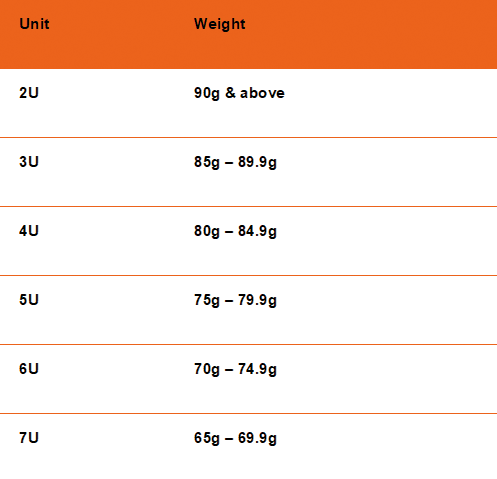
LiGHT WEIGHT OR HEAVY

HEAD HEAVY OR HEAD LIGHT BALANCE

STIFF OR FLEXIBLE SHAFT

PRICE OF THE RACKET

All of the above should be considered to see what works with your level of experience, if you’re a singles player or doubles and finally your game strategy.
The Badminton Racket Review Team have made this task much easier by creating the E-Zone (learn more here https://badmintonracketreview.com/our-story/)
Visit www.badmintonracketreview.com for more information.

Choice of Brand







BADMINTON RACKET DISSECTED
BADMINTON RACKET WEIGHT

The physical weight of a racket has a significant impact on arm joints and muscles. Some players find that super light rackets require too much effort to generate power as do very heavy rackets. However, advances in technology and material research have meant lighter rackets are becoming increasingly more powerful.
Badminton rackets are generally weighted in classes set out below :
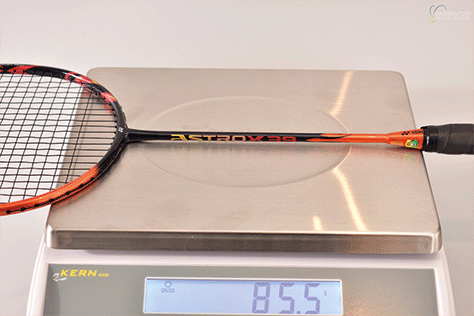
RACKET GRIP
Most racket manufacturers provide four grip sizes. In Japan, they range from G2, G3, G4 to G5 where G2 is the biggest size and G5 is the smallest size. In some countries, the opposite applies. Some brands go by small, medium and big sizes.
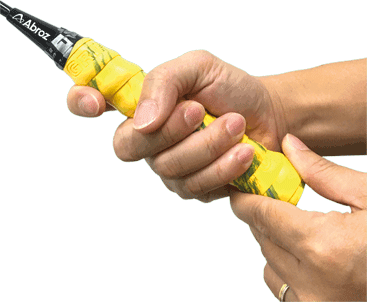
BALANCE POINT
The diagram below highlights the general effects of opposing balance points. The balance point can make notable differences in both smash and defence capabilities. Broadly speaking, a racket that is weighted towards the head (regarded as a ‘head heavy’ racket or on the E-zone 312mm+) helps to generate better smash power, whilst conversely a racket that is more evenly balanced or ‘head light’, tends to have better defensive qualities and overall manoeuvrability.


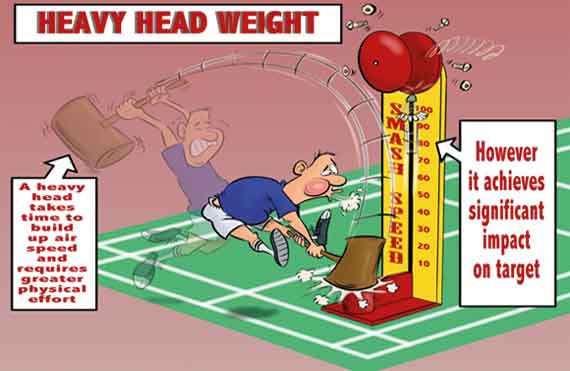
As with Racket weight, flexibility and shaft stiffness the racket balance point does have a significant effect on arm joints and muscles.
BADMINTON RACKET SHAFT STIFFNESS
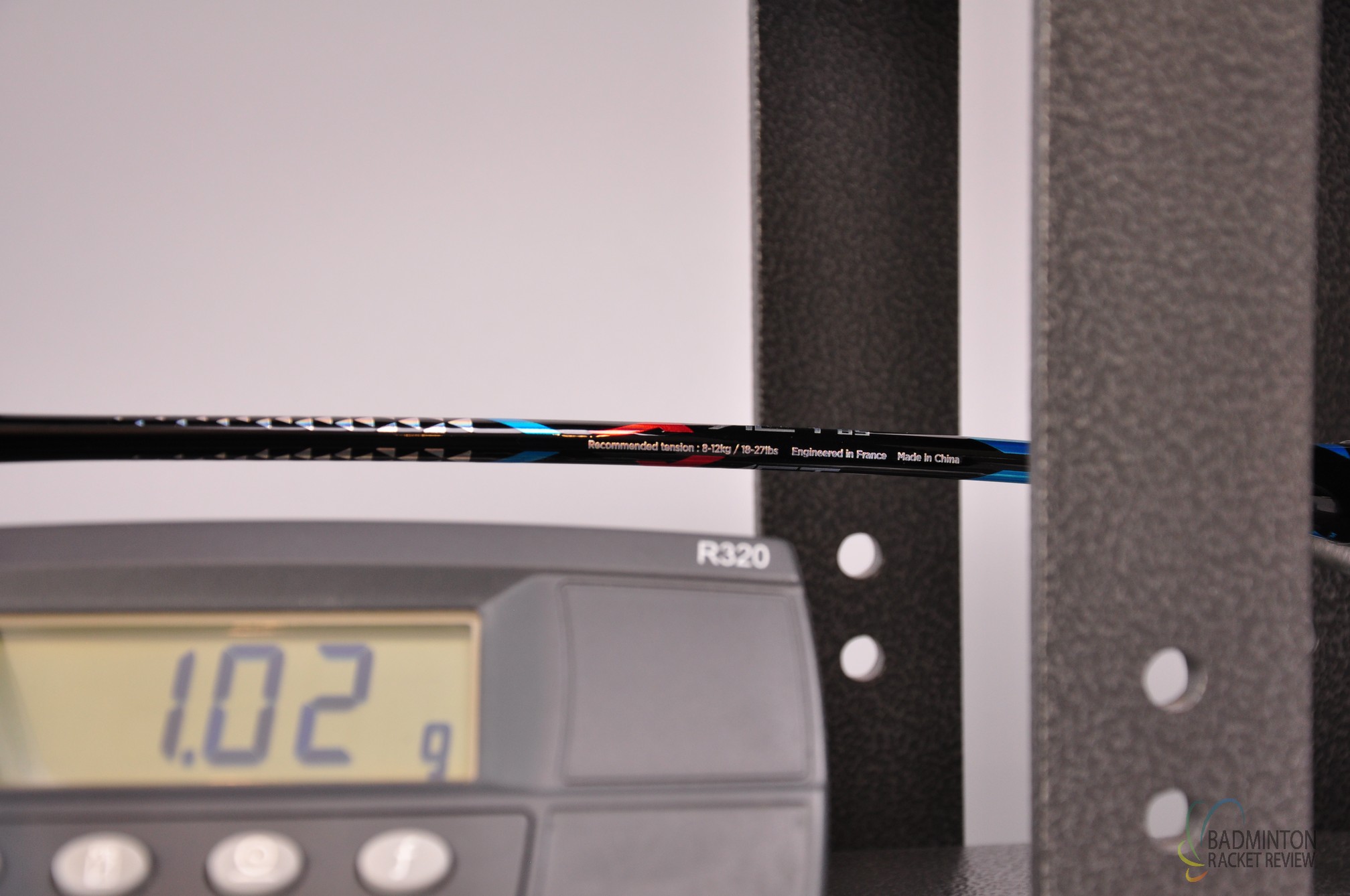
The stiffness of the shaft has a massive impact on repulsion (physical energy input vs shuttle flight distance), shuttle control, power generation, wrist, shoulder and elbow wear and tear.
Racket stiffness varies from flexible to stiff, however every racket manufacturer has their own way of rating the stiffness of their rackets, which makes it confusing when comparing rackets across different manufacturers. Badminton racket review’s shaft stiffness testing is carried out consistently and uniformly on all rackets and so therefore all results can be reliably cross-compared using our Racket Review E-Zone review platform.
Shaft stiffness has a significant impact on wrist, elbow and shoulder strain. Many people find stiffer rackets more strenuous on their arm joints as opposed to more flexible rackets.
So why do people choose stiff rackets? They are said to have better control over the shuttle and, provided the player can generate enough swing speed, they can generate lots of power.
Flexible rackets can generate good power using less effort; in reality, they actually have one of the highest ratios of power vs input for many club players. Why? Take for example the clear shot: When the racket is swung backwards, a flexible racket shaft will flex further back than a stiff shaft, leading to an extended snap-forward on contact with the shuttle, which would generate a greater amount of force without the player having to exert too much energy. They are also less strenuous on arm joints because they require less movement to be put into motion. However, the player compromises on control, the greater the flex.
INJURIES AND SKILL LEVELS

Shoulder front
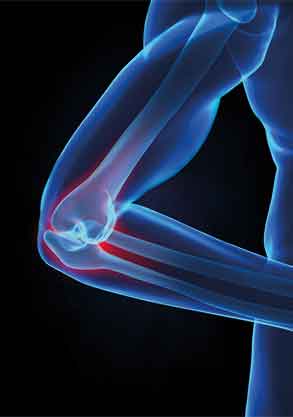
Elbow
If you feel strain on these body parts when playing Badminton, try changing your racket, you might be surprised how much difference it can make to your body joints and muscles. All the information below is based on Badminton Racket Review’s own test results. Always take advice from a healthcare professional before continuing to play.

Wrist
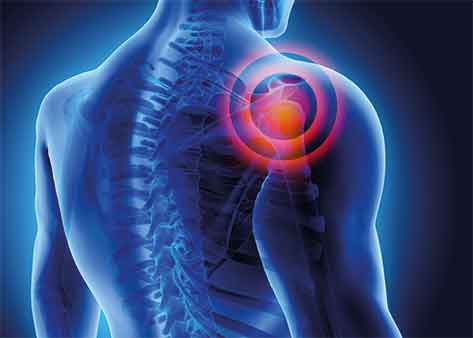
Shoulder Back
Racket specification
Beginners/Player with arm injuries
We would recommend beginners focus on finding a racket that is easy to use and one which does not require a perfect hitting technique so you can enjoy longer rallies. We would also recommend players with arm and shoulder injuries use the same specification as you want to minimise the strain inflicted on your joints.
WEIGHT
Range of 80g – Max 88g
BALANCE
No more than 309mm
SHAFT STIFFNESS
No more than 1.08 or medium flex 10
Using the Badminton Racket Review E-Zone prioritise the results according to what appeals the most i.e. overall score, smash speed, manoeuvre speed or manufacturer and so on. Go to the Racket Review Ezone here.
Intermediate Players
You can choose a racket according to any aspect of your game you would like to improvise; so if you have a slow smash, you might like to sort the results according to the racket which produces the best smash speed. If you have a weak or inconsistent defence, then choose a racket with enhanced control, aiming for a low balance point and high manoeuvre speed. Go to the Racket Review Ezone here.
WEIGHT
Range of up to 90g
BALANCE
No more than 312mm
SHAFT STIFFNESS
No more than 1.08 or medium flex 10
Advanced/Professional Players
As an advanced or professional player, you already know your playing style and have a good idea of what kind of racket works for you. You will also be aware of the amount of rackets on the market with similar specifications. What we help you to determine is which particular racket performs best according to the racket specification you like, using like-for-like comparative testing across hundreds of products and displayed in a high-spec matrix in the Racket Review E-Zone, as well as getting an informed, unbiased, preview of new rackets launched by all the major brands. Go to the Racket Review Ezone here
BADMINTON PLAYER SKILL LEVEL
Please see below player skill levels defined:
Beginner
Player returning to badminton after a significant break or starting to play the sport for the first time.
Intermediate
Player who is able to hit the shuttle with accuracy to most parts of the courts using reasonable technique, has a good defence and attack, understands the rules of the game, has started to think about his/her opponent’s weaknesses and strengths and plays accordingly, has good foot movement and fitness.
Advanced
Player who has the skill to hit every shot with good technique, can generate lots of power easily and efficiently, is able to direct the shuttle to all parts of the court in defence and attack, plays consciously and strategically during every rally and can move around the court at significant speed with an appropriate amount of fitness to not fade during long rallies.
Professional
Mastered all areas of the sport and has a world ranking.

